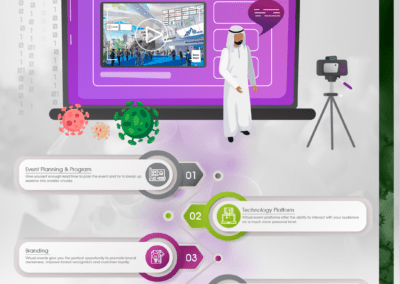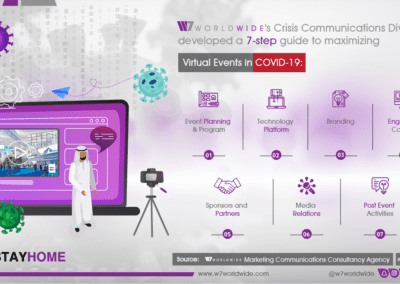COVID-19 had an immediate impact on the events industry with conferences and exhibitions cancelled due to global travel restrictions and social distancing measures. After the initial shock to the industry, event organizers quickly turned to digital solutions and created virtual events to keep the momentum going. Business and professional online events increased by 1,100% in April 2020 compared to April 2019.
It is likely that the digital shift will change the events industry forever to ultimately develop into a hybrid model post-COVID-19. According to recent research, the global cloud-based event management market is expected to grow from USD 3,823.91 Million in 2019 to USD 8,253.02 Million by the end of 2025 at a Compound Annual Growth Rate (CAGR) of 13.68%.
When done right, virtual events offer a personalized branded experience, are highly cost effective and enhance the audience reach of an organization. This is why the concept has seen extensive adoption across many sectors, including corporate, healthcare, education, hospitality, technology and banking, financial services, and insurance (BFSI). Transitioning from physical to digital can be a difficult choice, but unlike live events, virtual events allow you to accommodate audiences who otherwise would not have been able to attend due to budget or travel limitations.
“The value of face-to-face interaction will never go away, but in the current times going virtual must be a necessary part of your event programme.” says Abdulrahman Inayat, Director and Cofounder of W7Worldwide. “Thanks to today’s technology, major industry events, conferences and exhibitions can continue to take place by pivoting to a virtual format. Treat your virtual event with the same thought and strategy that you apply to live events. While the means for achieving your goals may be different virtually, if you lead with strong content, facilitate engagement, and keep your audience in mind, you cannot go wrong.”
So how do you turn a multi-day conference, filled with networking opportunities, educational sessions, and the attendee insights they generate into a virtual one? With their new guide, W7Worldwide sets out the 7 key steps to creating a successful virtual event in the COVID-19 era and beyond. (Click Here to Read Full Report).
The various steps covered include strategic planning, event program, choosing the right technology platform, how to maximise all branding opportunities, producing engaging content, featuring quality speakers, how to include sponsors and partners, media relations and how to extend the life and brand exposure of the event afterwards.
Adding virtual events as a key digital strategy to your event programme during COVID-19 will be crucial in reaching a wider audience with the added benefit of helping to expand the brand reach of established annual industry events in the conference calendar. Events are an integral part of networking and learning for any industry. The rise of virtual events is not a new trend, and this has been accelerated against the backdrop of COVID-19 to provide a solution for continued industry engagement with its stakeholders.
W7Worldwide understands how to create value-adding, engagement-driven virtual conference experiences, having produced major regional and international industry events in various sectors. The agency frequently turns large conferences into fully-fledged immersive virtual events, such as the recent MENA Information Security Conference and the IDC CIO Summit 2020.



